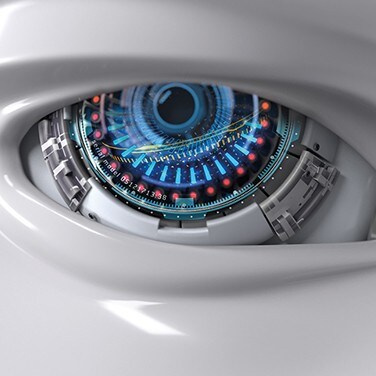Pharmaceutical Applications of Artificial Intelligence
By Iva Fedorka.
The pharmaceutical industry has confidence in artificial intelligence (AI). They hope that it will help to reduce workload, shorten timelines, identify drug repurposing possibilities, improve industry productivity, and make clinical trials more successful.
Drug discovery and development for a single medication can take more than a decade and cost an average of 2.8 billion USD. Despite this time and resource commitment, nine out of ten still fail phase 2 clinical trials and never get regulatory approval. Increased data digitalisation in the pharmaceutical sector lends itself to AI tools and networks that mimic human analytical thought processes and can be programmed to interpret, “learn,” and make “intelligent” decisions.
History of Artificial Intelligence in Pharmaceutical Applications
AI pioneers in the 1950s talked about machines that could sense, reason, and think like people. The rapid increase in computer processing power and large amounts of data and advanced algorithm development since then have significantly improved so-called machine learning (ML). This form of AI is task-focused, supports analysis, understands and generates text and speech (natural-language processing), and truly mimics the way we think.
More than 50 years later, on June 12, 2007, the robot Adam successfully identified the function of a yeast gene. Adam searched public databases and developed hypotheses about the genes that code for key enzymes in the yeast Saccharomyces cerevisiae. When these hypotheses were tested, researchers found nine genes that were new and accurate and only one that was wrong.
“Robot scientists using AI can test more compounds, and do so with improved accuracy and reproducibility, and exhaustive, searchable record-keeping” said systems biologist Steve Oliver of the University of Cambridge, a member of the group that developed Adam. Later, the same team announced that Adam’s colleague Eve had discovered a possible new treatment for drug-resistant malarial parasites.
"We are turning the drug-discovery paradigm upside down by using patient-driven biology and data to derive more-predictive hypotheses" said Niven Narain.
Success Stories
Researchers at Berg, a biotechnology company near Boston, Massachusetts, used AI to find potential treatments based on the cause of a disease. They tested more than 1,000 cancerous and healthy human cell samples, varying the growth conditions and then measuring cell production and output. The key differences between the diseased and healthy cells were demonstrated by the AI analysis, which incorporated patient biological and outcome data.
“We are turning the drug-discovery paradigm upside down by using patient-driven biology and data to derive more-predictive hypotheses, rather than the traditional trial-and-error approach” said Niven Narain, Berg’s co-founder, president, and chief executive officer. His team used this approach to identify specific cancer metabolism molecules and determine how a new cancer drug would work. The drug (BPM31510) is now in a phase 2 clinical trials for patients with advanced pancreatic cancer. The company is using the same AI system to find drug targets and therapies for diabetes, Parkinson’s, and other diseases.
London-based BenevolentAI has a cloud-based AI platform that analyses data from research papers, patents, patient records, and clinical trials. The database includes over one billion documented or inferred relationships between genes, symptoms, diseases, proteins, tissues, species, and medications. Used like a search engine, it can produce graphs of medical conditions, associated genes, and effective compounds. “AI can put all this data in context and surface the most salient information for drug-discovery scientists” said Jackie Hunter, BenevolentAI board director.
When BenevolentAI was asked to suggest treatments for amyotrophic lateral sclerosis (ALS), they identified about a hundred existing compounds with potential. Their scientists chose five to test at the Sheffield Institute of Translational Neuroscience, UK. At the December 2017 International Symposium on ALS/MND in Boston, Massachusetts, four of the compounds were reported to show promise and one even delayed neurological symptoms in mice.
Some think the potential for AI to pinpoint previously unknown causes of disease will accelerate the trend toward treatments designed for patients with specific biological profiles. “Personalized medicine has been talked about for a long time” said Hunter. “AI is going to enable it.”
What does the future hold?
AI has already shown its ability to predict a drug’s pharmacokinetics, target receptors, physicochemical properties, solubility, binding affinity, bioactivity, toxicity, and other features that affect its effectiveness.
Industry leaders agree that the use of AI may create changes in the drug-discovery process. Some experts opine that future students will need an understanding of biology coupled with computer science, statistics, and machine learning. Some schools have already created undergraduate programs in biomedical computation, although demand for these degrees may change as new therapies emerge.
Others believe that predictions about AI’s ability to revolutionise drug discovery are too optimistic. Narain, who expects AI to drive major advances, agrees that claims may be exaggerated, but it won’t be long before they are proved or disproved. “The hype can’t last very long because over the next five years or so, the truth will come out in the data” he said. “If by then we are creating better drugs, and doing it faster and cheaper, then AI will really take off.”
This content was inspired, in part, by “How artificial intelligence is changing drug discovery,” Nature, May 30, 2018; “Transforming Drug Discovery Through Artificial Intelligence,” Forbes, March 3, 2020; and “Artificial intelligence in drug discovery and development,” Drug Discovery Today, January 26, 2021.
Iva Fedorka is a Thermo Fisher Scientific content copywriter.
